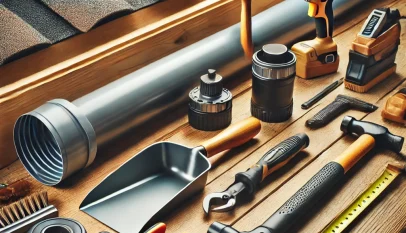Roofing Tools: Essential Equipment for Professional Installation and Maintenance
Choosing the right roofing tools is essential for achieving a durable and reliable roof. Investing in high-quality tools can significantly improve efficiency and reduce risks during roofing projects. From simple hand tools to advanced machinery, each plays a crucial role in ensuring that the job is done correctly and safely.
In any roofing endeavor, having the proper tools can make a substantial difference in the final result. Experienced roofers understand that the right equipment not only streamlines the workflow but also enhances the quality of workmanship. Whether it’s roofing nailers, ladders, or safety gear, each tool serves a specific purpose and contributes to a successful roofing project.
For those interested in learning more about the various tools available and how they can impact roofing tasks, exploring this topic thoroughly is worthwhile. The right selections can lead to better outcomes and help avoid common pitfalls during installation or repairs.
Essential Roofing Tools
Understanding the essential tools for roofing work is key to achieving high-quality results. These tools help with precise measurements, efficient material removal, secure fastening, and clean cuts.
Measuring and Layout Tools
Measuring and layout tools are critical for any roofing project. They ensure that measurements are accurate and layouts are precise, which ultimately results in a well-constructed roof.
- Tape Measure: A durable tape measure is essential for measuring distances and marking cut lines. A 25-foot tape is common for most roofing tasks.
- Chalk Line: A chalk line creates straight reference lines, helping roofers ensure accurate alignment when laying shingles or other materials.
- Square: A framing square assists in checking angles, ensuring corners are square, and verifying that cuts are straight.
- Level: A level helps verify that surfaces are flat and pitches are correct, essential for proper drainage on roofs.
Tearing Off Tools
Tearing off tools are necessary for the removal of old roofing materials. This process can be labor-intensive, so efficient tools are crucial.
- Roofing Shovel: A roofing shovel, or tear-off shovel, features a wide blade and a sturdy handle, making it effective for pulling up shingles or other materials.
- Pruning Saw: A pruning saw is useful for cutting through underlying materials like plywood or OSB during roof removal.
- Crowbar: This tool is vital for prying up roofing elements and removing nails. A heavy-duty pry bar may be needed for tougher jobs.
- Dump Cart: Using a dump cart helps in quickly transporting debris from the roof to the ground, increasing efficiency.
Roofing Hammers and Nail Guns
Roofing hammers and nail guns facilitate the secure fastening of roofing materials. Proper tools in this category ensure that installations are both fast and secure.
- Roofing Hammer: A roofing hammer, or hatchet, typically has a curved claw for removing nails and a flat side for driving them. It is lightweight and easy to handle.
- Nail Gun: Pneumatic nail guns save time and effort. They quickly drive nails into materials, and adjustable settings allow for varying nail lengths.
- Safety Features: Roofing nailers often come with safety features to prevent accidental firings, ensuring that they can be used safely on sloped surfaces.
Utility Knives and Cutting Tools
Utility knives and cutting tools provide the ability to make clean cuts in roofing materials. Having sharp, reliable tools is essential for quality work.
- Utility Knife: A retractable utility knife is standard for cutting roofing felt and shingles. Changeable blades ensure continuous sharpness.
- Snips: Tin snips or aviation snips are designed for cutting metal roofing. They come in left, right, and straight cuts to accommodate different materials.
- Oscillating Multi-Tool: This versatile tool can cut through multiple materials and is especially handy in tight spaces or when making precise cuts.
- Safety Gear: Users should always have protective gloves and eyewear when handling sharp tools and working on roofs.
Safety Equipment
Safety equipment is essential for protecting workers on roofing projects. Proper gear minimizes risks associated with falls, injuries, and hazardous conditions.
Safety Harnesses and Ropes
Safety harnesses are critical for anyone working at heights. They are designed to secure the worker to a stable structure, preventing falls. When selecting a harness, it is important to look for features such as:
- Adjustable straps for a secure fit
- Shock-absorbing lanyards to reduce impact in the event of a fall
- D-ring placements for versatile attachment points
Ropes used in conjunction with harnesses must be strong, durable, and suitable for roofing applications. Workers should inspect harnesses and ropes before each use, checking for wear and damage.
Ladders and Scaffolding
Proper use of ladders and scaffolding is vital for workplace safety. Ladders should be placed on stable, level ground and positioned at a suitable angle. Key considerations include:
- Load capacity: Ensure the ladder can support the worker and tools.
- Safety feet: This prevents slipping and ensures stability.
Scaffolding must be erected according to manufacturer instructions, ensuring it is stable and correctly braced. Regular inspections are necessary to identify any weaknesses or hazards.
Work Gloves and Protective Clothing
Protective clothing plays a significant role in safeguarding against injuries. Work gloves should provide:
- Grip and dexterity for handling tools and materials
- Cut-resistant features to protect against sharp objects
Long-sleeved shirts and durable pants help shield against falling debris and sharp edges. High-visibility materials are recommended to increase conspicuity, especially on busy job sites. Frequent checks should be made to ensure clothing remains intact and offers adequate protection.
British Virgin Islands Offshore Company Setup and Benefits Explained
The British Virgin Islands (BVI) is a leading offshore jurisdiction widely chosen for comp…














